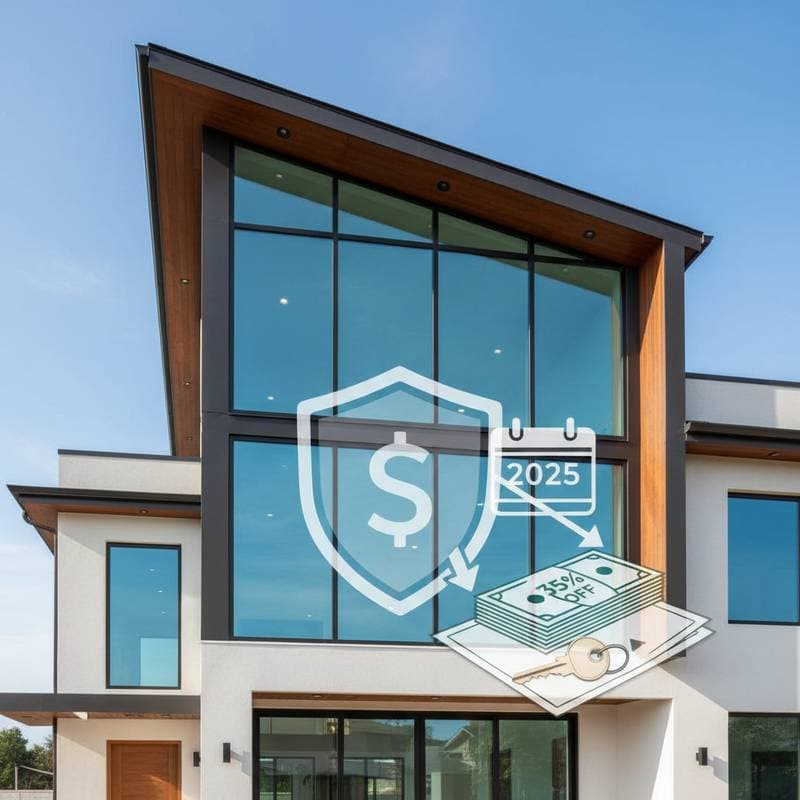Understanding Impact Windows and Insurance Savings
Impact windows represent a robust investment for homeowners in storm-prone areas. These specialized windows withstand high winds and flying debris, qualifying properties for significant insurance discounts. In 2025, insurers increasingly reward such upgrades with premium reductions of up to 35 percent through wind mitigation credits.
The financial appeal extends beyond immediate savings. Enhanced protection minimizes repair costs after storms, while energy-efficient designs lower utility bills. Homeowners who install these windows also see property values rise, as buyers prioritize resilient features in real estate markets.
To realize these benefits, homeowners must navigate the installation process carefully. Proper timing aligns upgrades with insurance policy renewals, maximizing credit application. Certified products and professional work ensure eligibility, turning a protective measure into a smart financial strategy.
Step-by-Step Guide to Installation and Savings
Begin the process well in advance to avoid delays. Early action secures permits, coordinates deliveries, and positions the project before insurance renewals.
- Schedule an inspection and obtain necessary permits early in the planning phase. Contact local building authorities to understand requirements specific to your area.
- Confirm product delivery dates with suppliers to align with your timeline. Select certified models that meet regional wind-load standards.
- Allow sufficient buffer time before your insurance policy renewal date. This interval accommodates any unforeseen adjustments.
- Notify your insurance provider immediately after completion. Submit all documentation to trigger the premium adjustment.
A common pitfall involves procrastination, which leads to scheduling conflicts and missed renewal deadlines. Initiate planning at least three to six months ahead to ensure smooth execution.
Tailoring Impact Windows to Your Location and Property
Requirements for impact windows differ across regions, influencing both costs and benefits. Coastal counties typically mandate higher design pressure ratings to counter intense hurricane forces. Inland properties often suffice with lighter, more affordable models that still provide adequate protection.
Consult local building departments for lists of approved products. These resources detail specifications like glass thickness and frame strength. Climate variations further shape choices; warmer regions gain from low-emissivity coatings that reflect heat and reduce cooling expenses, whereas temperate areas emphasize air sealing to prevent drafts and maintain indoor comfort.
Timing installations strategically yields additional advantages. Contractors frequently provide discounted rates during off-peak seasons, away from the height of storm preparation periods in summer or fall. This approach not only saves money but also avoids installer backlogs.
Property types alter the upgrade dynamics. Condominium owners coordinate through homeowners associations, which may require collective approvals and shared funding. Single-family homes proceed more independently but demand individual permits and inspections. Verify with your municipality whether specialized forms apply to your dwelling type.
Professional Installation Versus Do-It-Yourself Efforts
Opt for professional installation in nearly all scenarios to guarantee quality and compliance. These windows demand exact sealing techniques and secure anchoring to endure extreme conditions. Certified installers adhere to wind-load codes, preserving product warranties and insurance eligibility.
Professionals handle critical tasks such as:
- Evaluating the structural integrity of existing window frames for compatibility.
- Anchoring units firmly to wall openings to meet safety standards.
- Preparing and submitting required inspection forms for official verification.
Attempting do-it-yourself installation risks voiding discounts if documentation proves inadequate. Insurers scrutinize workmanship through inspections, and subpar execution could lead to denied claims.
Reserve DIY involvement for preparatory or finishing touches. These include removing old window treatments, cleaning installation surfaces, or applying paint to surrounding trim post-installation. Structural or regulatory elements require licensed expertise to avoid costly errors.
Essential Checklist for Impact Window Upgrades
Follow this sequence to streamline your project and secure maximum savings.
- Research available insurance discounts and confirm eligibility for wind mitigation credits through your provider.
- Collect detailed quotes from multiple suppliers, focusing on certified impact window models that match your needs.
- Plan the installation timing to coincide with your upcoming policy renewal for immediate premium adjustments.
- Prepare the property by clearing work areas and conducting preliminary inspections of existing frames.
- Hire a licensed installer, verify all permits, and schedule the work promptly.
- Arrange for a post-installation inspection to generate a comprehensive wind mitigation report from a certified professional.
- Submit the inspection report and supporting documents to your insurance company without delay.
- Confirm the application of savings by requesting written confirmation of your updated premium rate.
- Maintain organized records, including receipts, warranties, and inspection reports for future reference.
- Reevaluate your overall coverage needs, potentially adjusting deductibles in light of reduced risk exposure.
Frequently Asked Questions
How do insurance companies verify the presence of impact windows?
Insurers depend on certified inspection reports that include product approval details and photographic evidence. Absent this documentation, they cannot authorize any discounts, emphasizing the need for thorough records.
Can renters experience benefits from these property upgrades?
Premium reductions apply exclusively to property owners. Renters enjoy heightened safety and potential indirect advantages, such as a more secure living environment, but receive no direct financial relief on insurance costs.
Do impact windows contribute to higher property values?
Affirmative; prospective buyers account for reduced insurance and maintenance expenses when evaluating homes. Professional appraisers frequently highlight storm-resistant features as enhancements that boost market appeal.
What occurs if the home already features storm shutters?
Impact windows often secure superior discounts compared to shutters, offering continuous protection without the need for manual deployment. Discuss both options with your insurer to determine the most advantageous credit level.
Do all insurance providers extend identical discounts?
Discount structures vary by company, with each establishing its own reduction percentages. Obtain quotes from several carriers to identify the optimal savings percentage for your situation.
Securing Your Savings and Protection
Impact windows provide tangible financial advantages alongside fortified home security. Initiate by confirming credit eligibility, meticulously documenting each upgrade phase, and maintaining open communication with your insurer. These actions amplify returns, delivering ongoing premium reductions with every policy renewal, instantaneous safety enhancements, and elevated marketability for your property.
